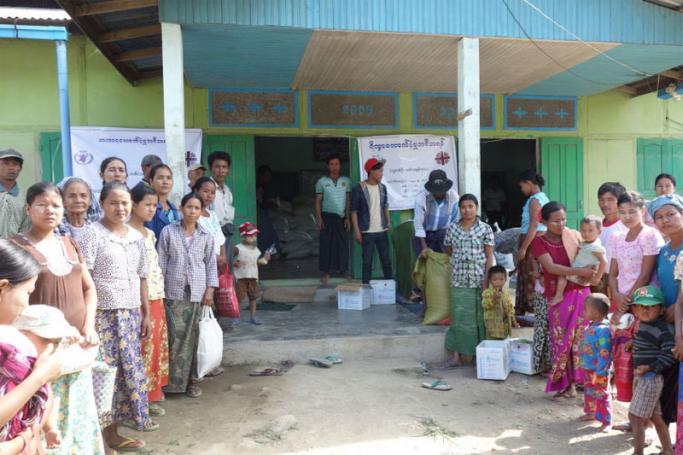A UN report issued today says Chin and Rakhine States which were hit by cyclone Komen are still suffering from food shortages even seven months after being flooded. The report warns that the people in these flood-hit regions will face severe food shortages in coming months and they badly need relief supplies.
The report urges cash aid been given directly to them rather than distributing food as there is an adequate supply of rice in the market.
The Food and Agriculture Organization (FAO) and World Food Programme (WFP) issued the report based on a survey conducted in November-December 2015 by the Crop and Food Security Assessment Mission (CFSAM).
Flooding initially damaged crops, especially paddy, but crops could be grown when the flood water receded.
CFSAM estimates rice production in 2015 fell 3% in comparison with 2014 and it will be 2% below the average of the last three years.
Flooding affected crops across the entire nation but in the worst-hit regions especially in Chin and Rakhine States, rice production will be 15% below last year’s output which will make commodity prices rise and result in food shortages for flood victims.
In addition, there were heavy financial losses in the livestock and fishery sectors in Rakhine State and Sagaing Region with 23,000 hectares of prawn farms totally damaged in the cyclone.
FAO country representative Bui Thi Lan said that they were focussing on distributing seeds to farmers, rehabilitation of livestock farming, giving aid to buy fishing boat and nets, rehabilitation of fish and prawn farming, rehabilitation of livelihoods and a long-term plan for educating local communities and farmers to handle emergency situations better and more effectively.
Domenico Scalpelli, WFP Resident Representative and Country Director, said that as affected households have faced difficulties in obtaining credit, cash assistance is necessary to assist them rebuild their livelihoods and to avoid difficulty in coming months.
FAO aims to meet the immediate agricultural needs of the 332,750 individuals still recovering from the 2015 floods but faces a funding shortfall of $47 million to meet all food assistance until the end of 2016.
To date, FAO’s resilience program in Myanmar has secured financial resources and will provide assistance to around 150,000 farmers and fishermen in the worst-affected areas of Rakhine, Chin and Sagaing.
You are viewing the old site.
Please update your bookmark to https://eng.mizzima.com.
Mizzima Weekly Magazine Issue...
14 December 2023
Spring Revolution Daily News f...
13 December 2023
New UK Burma sanctions welcome...
13 December 2023
Spring Revolution Daily News f...
12 December 2023
Spring Revolution Daily News f...
11 December 2023
Spring Revolution Daily News f...
08 December 2023
Spring Revolution Daily News f...
07 December 2023
Diaspora journalists increasin...
07 December 2023
COVID-19 cases on the rise in Bago region












